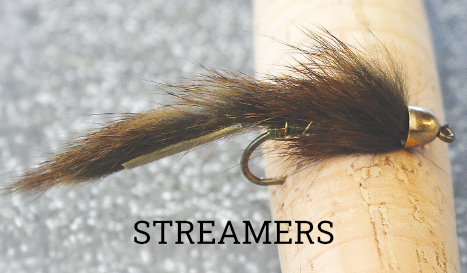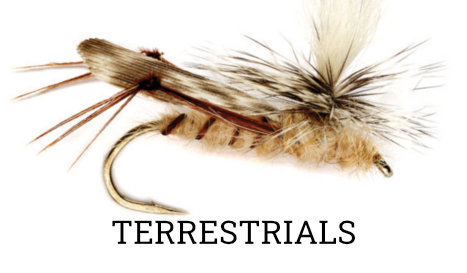FLY
IDENTIFICATION
How to Catch Colorado Trout: Match the Hatch!
If you’ve been fly fishing for a while, or you spend time around anglers and in fly shops, you’ve almost certainly heard the phrase "match the hatch." But what does it actually mean? Anglers "match the hatch" when they tie on a fly that correctly imitates (including the correct life cycle of) the bug life in the water and those landing on top of the water. This means it's vital to be able to identify the different bugs that frequently hatch in Colorado so that you can pick a fly that the trout are already eating.
Midges, Mayflies and Caddis: Important Colorado Hatches
In Colorado, trout primarily feed on three main types of insects: midges, mayflies and caddis. While caddis are around the size of your fingernail, midges and mayflies are often tiny: a few could fit on one of your fingernails! So, Colorado anglers fish very small nymphs and dry flies to imitate these insects. So, what do these bugs look like, and what flies do Colorado anglers use to imitate them?
Caddis are a relatively easily-identified bug. In general, they look like small moths, and can be tan or black. One of the most common and well-known flies is the elk hair caddis dry fly (usually fished in size 14-18 in Colorado), which imitates the profile of an adult caddis that has landed on the water. Caddis can often be found in grass and brush, so if you rustle some grass and a few moth-like bugs fly out, you know there are caddis in the area. When the hatch is on, there will often be big swarms of caddis in the air, and the trout will be bubbling on the water’s surface to feed on this bigger meal. Additionally, anglers often fish flies that imitate caddis just after these bugs hatch in the water. Caddis pupa look like small, curved green worms, usually around half an inch long. If you turn over a submerged rock and you see what looks like a small green worm, there is a good chance that trout are eating caddis pupa; head to your local fly shop and ask for their favorite caddis nymph patterns!
Midges are another important bug in Colorado. Midges usually look like small black mosquitos, and will often land on your hands and arms if you’re fishing during a hatch. Midges can be hard to see, but they are a favorite snack of Colorado’s birds. If you see a lot of birds zipping through the air, but don’t see many bugs, it’s likely they are snacking on tiny midges. Go-to midge patterns are the RS2 and the zebra midge, usually in size 20-24 (small, we know!). Midges can be effectively fished as dry flies, emergers or nymphs.
The most broad category of bugs in Colorado are mayflies. In general, a mayfly is a six-legged insect that resembles a small dragonfly (they are in the same family). You can identify a mayfly when you see small bugs that have six legs and a curved thorax. In Colorado, mayflies are usually very small, usually around size 20-24, and sometimes much smaller. The most well-known mayfly in Colorado is the blue winged olive (BWO), which is, as it sounds, a green mayfly with blue wings. There are also various Baetis hatches in Colorado, another member of the mayfly family. There are many varieties of mayflies in the Centennial State, so anglers usually fish broad mayfly imitations. Popular dry flies are the parachute adams and the purple haze, and popular nymphs include prince nymphs and copper johns. All these flies are generally fished in sizes 18-24 in Colorado. Hatches vary by time of year, so make sure to visit Gunnison Fly Fishing Outfitters for the most recent information on the hatches in Colorado’s high country!






